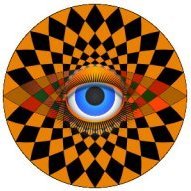
StephanP
-
Posts
50 -
Joined
-
Last visited
Reputation Activity
-

-
 StephanP reacted to carl123 in Vector brush import fails?
StephanP reacted to carl123 in Vector brush import fails?
It's a raster brush not vector, switch to the Pixel persona, you should find it there
-
 StephanP reacted to Alfred in Vector brush import fails?
StephanP reacted to Alfred in Vector brush import fails?
All six copies of it! Maybe that’s why the dialog says “Imported 1 raster brushes” instead of “Imported 1 raster brush”, but I’m inclined to think that slightly careless programming is a more likely cause.
-
 StephanP reacted to MikeTO in Terminology Translation Dictionary
StephanP reacted to MikeTO in Terminology Translation Dictionary
Thank you both @StephanP and @Oufti. I have updated the PDF in the first post of this thread with your suggestions and corrections. With regards to your latest feedback:
"Lijn" vs. "Streek" - I will add Streek in parentheses - if/when Affinity is translated into Dutch, somebody else can choose one 🙂 "Tekststroom" vs. "Tekstverloop" - I have changed it "Tafelformaten" vs. "Tabelopmaak" - I have changed it "Drempel" vs. "Drempelwaarde" - I have changed it "Spatiëring" vs. "Letterspatiëring" - I have changed it "Richting" vs. "Oriëntatie" - I will add Oriëntatie in parentheses. I understand your point but this is another Mac vs. Windows issue. In addition to using this term in New Document and Document Setup, Affinity uses the macOS Print dialog which uses the term Richting. Thanks!
-
 StephanP got a reaction from Oufti in Terminology Translation Dictionary
StephanP got a reaction from Oufti in Terminology Translation Dictionary
Aha. Well yes, I'm from a Windows environment as you might have guessed by now. Hence the preference for the more friendly and cooperative infinitive ("let's do this") rather than an imperative executive order to "Do this". I can understand that choices need to be made here and I could understand, with some reluctance, that in this domain Apple could receive the privilege.
I can understand that Streek is not common in Dutch translations of graphics tools, but how are we ever going to get out of this legacy from the times where there were only lines with colour and thickness. Graphics tools have evolved and thus turned their lines into more complex strokes (in addition to plain lines). I am offering a opportunity to correct this. Please note the other remark about French where a distinction is made between stroke and line as well.
My suggestion was indeed to stay consistent with the exact naming of the panel. If you add Object to the English, then please keep the Objectstijlen also in Dutch.
Yes I was aware that this is referring to the linking of text frames and I changed tekststroom into tekstverloop because in Dutch language no one would ever think/speak of tekststroom whereas tekstverloop (as in the course of a river) is indeed used.
Please use Tabelopmaak. In Dutch we sit at a tafel and present data in a tabel. Opmaak in Dutch language is sort of plural, like money if you will. Opmaak encompasses the different design options (applied to a table). One cannot talk about opmaak singular. In such cases one would talk about the line colour or line width or cell margin, etc.
Drempel is treshold (of a door). Drempelwaarde is threshold value, which is meant here.
If I'm not mistaken kerning is the spacing between letters within a word. The English language has a specific term for this. Dutch unfortunately does not. Using the Dutch word spatiëring introduces an ambiguity with more general spacing such as between words. Hence my suggestion to use letterspatiëring as a distinction from the spacing between words. Letterspatiëring is understood in Dutch language.
Richting (direction) is a Dutch word that is generally used as direction 'from A to B'. Word uses Afdrukstand (printing orientation) for paper orientation. If the english word in Designer/Publisher is Oriëntation (of paper or image), then there's nothing wrong with using its direct Dutch translation Oriëntatie, especially if it is followed by Staand (up right) and Liggend (flat) for Portrait and Landscape.
Nice discussion.
Thank you for this.
-
 StephanP reacted to MikeTO in Special Characters in Affinity - quick reference chart
StephanP reacted to MikeTO in Special Characters in Affinity - quick reference chart
Thank you, especially for 'whitespace' which I wasn't able to find a good translation for.
I've updated the Dutch chart in the first post of this thread.
Cheers
-
 StephanP reacted to Oufti in Terminology Translation Dictionary
StephanP reacted to Oufti in Terminology Translation Dictionary
The same distinction is used in Affinity French translation:
• a stroke = un trait (defined as: a line drawn on a surface, in particular on paper, with a tool — which implies it leaves a trace (same origin)) ;
• a line = une ligne (etym. a linen thread drawn between two points).
-
 StephanP got a reaction from HCl in Terminology Translation Dictionary
StephanP got a reaction from HCl in Terminology Translation Dictionary
Stroke is a common word in graphic design applications and it stems from the distinction between a simple line/curve and a line/curve including all its appearance attributes, e.g. (variable) width, gradient, pattern, etc.
This is what terminology and definitions are about: where distinction matters, a different term/definition will arise. (Every day there's a new word to learn and use.)
'Pennestreek' (stroke of a pen) and 'penseelstreek' (stroke of a brush) are regular modern words making the distinction with mere (mathematical) lines.
-
 StephanP got a reaction from Oufti in Special Characters in Affinity - quick reference chart
StephanP got a reaction from Oufti in Special Characters in Affinity - quick reference chart
Some Dutch improvement suggestions in attached pdf
Speciale tekens (NL suggestions).pdf
-
 StephanP reacted to Pauls in Terminology Translation Dictionary
StephanP reacted to Pauls in Terminology Translation Dictionary
Hi @StephanP - It is indeed a major task and has not worked well when we've tried in the past. However I've noted your experience and should we take on Dutch in the future there could certainly be some opportunities as a reviewer / translator.
-
 StephanP got a reaction from firstdefence in (Solved) Clean PC after ongoing crashes?
StephanP got a reaction from firstdefence in (Solved) Clean PC after ongoing crashes?
Yesterday evening I manually removed some Affinity folders that remained after uninstall, reboot my pc and after that the re-install went allright.
I didn't take notes, but from the top of my head I found remaining folders in \ProgramData as well as \Users\NAME\Appdata (aka %APPDATA%)
-
 StephanP reacted to walt.farrell in Spelling checking doesn't work (solved)
StephanP reacted to walt.farrell in Spelling checking doesn't work (solved)
I believe they are.
The strong likelihood is you downloaded your files incorrectly the first time. It's very easy to do that if you try it from Github.
-
 StephanP reacted to SFurniss in Duration Summer sale?
StephanP reacted to SFurniss in Duration Summer sale?
@StephanP
We've not announced an end date just yet, if you keep an eye on our emails and social media pages, we'll let you know there once we announce it.
-
 StephanP got a reaction from SreckoM in Few questions about Publisher
StephanP got a reaction from SreckoM in Few questions about Publisher
Suggestion:
PDF Shaper is an excellent tool for splitting, joining and doing lots of other post processing stuff with PDFs.
-
 StephanP reacted to muelli75 in Numeric placement for guidelines
StephanP reacted to muelli75 in Numeric placement for guidelines
it should be able to place guidlines like all the other elements on the site by selecting the guide an type the exact numeric place in the transform-palette.
-
 StephanP reacted to Gabe in Incorrect Typographic quotes conversion?
StephanP reacted to Gabe in Incorrect Typographic quotes conversion?
Hi all,
Sorry for the delated reply. Issue logged.
-
 StephanP reacted to Adrian_M in LaTeX typesetting plugin in Designer
StephanP reacted to Adrian_M in LaTeX typesetting plugin in Designer
OK, I'm very aware that maybe most of the designers and users of the awesome Affinity Designer are not into scientific posters, books or documents, but I'm a mathematician and I love the app myself, as much as I understand and use it. :)
Hence, I got a small, but important feature request: a plugin/native support which would allow one to use the power of "local" LaTeX typesetting for symbols, fonts and other scientific notations.
I am aware I could use the great LaTeXiT + drag & drop, but still, I envision my workflow as follows:
When I have a complicated figure to draw, I fire up Affinity Designer and I draw, but for annotations and everything font or math symbol related, I'm not quite covered. I have installed some versions of the native LaTeX fonts (CMU) to use system-wide, but some are missing and still doesn't feel the same. So for symbols, equations etc. I would like to be able to input a LaTeX formula (delimited by the well-known dollar-signs) and Affinity would typeset it locally, using the fonts included in the LaTeX distribution installed on my Mac.
What do you think? Honestly, I think that such a feature would be useful for all kinds of technical drawers, although they may use CAD-style apps. But you'll never know when you need a formula on your piece of art, right? :)
Moreover, in perspective, I'm sure this would provide immensely useful for the future Publisher app, with inter-operability.
Thank you for the support and the awesome apps!
-
 StephanP reacted to MEB in How do I turn this rope part into a brush?
StephanP reacted to MEB in How do I turn this rope part into a brush?
Hi StephanP,
If the brush is being rendered in black and white (and the original source image was in colour) it's because you have a black stroke applied to the line. Remove the stroke colour from the line to get the brush rendered with the original colours of the source image.
-

-
 StephanP got a reaction from firstdefence in How do I turn this rope part into a brush?
StephanP got a reaction from firstdefence in How do I turn this rope part into a brush?
I'm getting there
-
 StephanP reacted to MEB in How do I turn this rope part into a brush?
StephanP reacted to MEB in How do I turn this rope part into a brush?
Hi StephanP,
Welcome to Affinity Forums
The source must be a raster image (transparent PNG). The basic process requires you to import the SVG to the canvas of your document, set the size you want - ideally you would want to create a high-res source image - so enlarge the svg object until you have a width of 1024 or more (up to you) using the Transform panel. Then with the object still selected go to menu File ▸ Export and select PNG. Set the Area dropdown there to Selection without background and export the file to be used as the source image.
To create the brush go to the Brushes panel and select New Textured Image Brush, pick the PNG image you exported and the brush should appear at the end of the list of the category currently selected in the top of the Brushes panel. Double-click the newly created brush to edit it and set it to Repeat. Adjust the Head and Tail Offset (redlines in the bottom section) and loom at the preview on top. Ideally both end sides of the source image must match so they can be perfectly aligned.
-
 StephanP reacted to ballardstudio in [Implemented] Publisher does not recognize WORD .docx files!
StephanP reacted to ballardstudio in [Implemented] Publisher does not recognize WORD .docx files!
Importing Word documents is bad practice when creating layouts. The carried over character attributes are known for causing various issues that can lead to a series of problems, including file corruption. You're better off creating a plain text document and reformatting it
-
 StephanP reacted to walt.farrell in Bullet list lacks indenting
StephanP reacted to walt.farrell in Bullet list lacks indenting
Text/Paragraph styles, for a robust solution.
There is a Paste Style, but it doesn't seem to work with text (or, I haven't figured out how, yet).
Alternatively, you could create a Style (using the Styles panel) from your first set of formatted text, then highlight the second set and drag the style onto it from the Styles panel.
-
 StephanP reacted to Dave Harris in Bullet list lacks indenting
StephanP reacted to Dave Harris in Bullet list lacks indenting
You don't need to use text styles to use bullets. You can indent them with settings in the Paragraph panel top Spacing section, or using the text ruler. You can include a tab in the bullet/list text and then set the tabstop with the Tabstop control in the Bullets and Numbering section.



